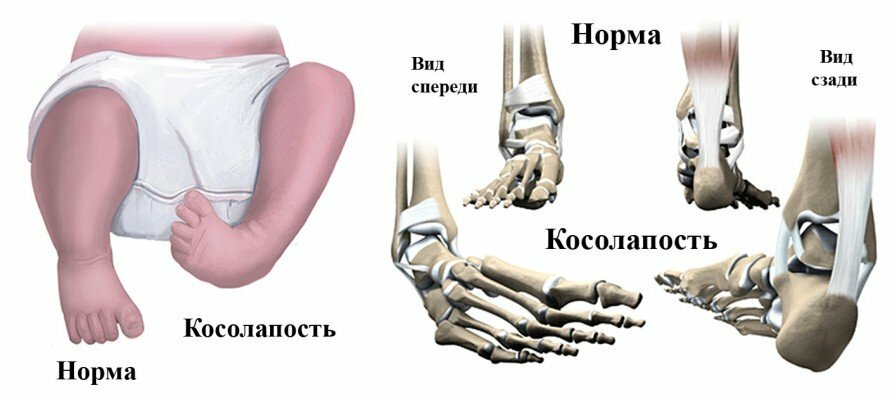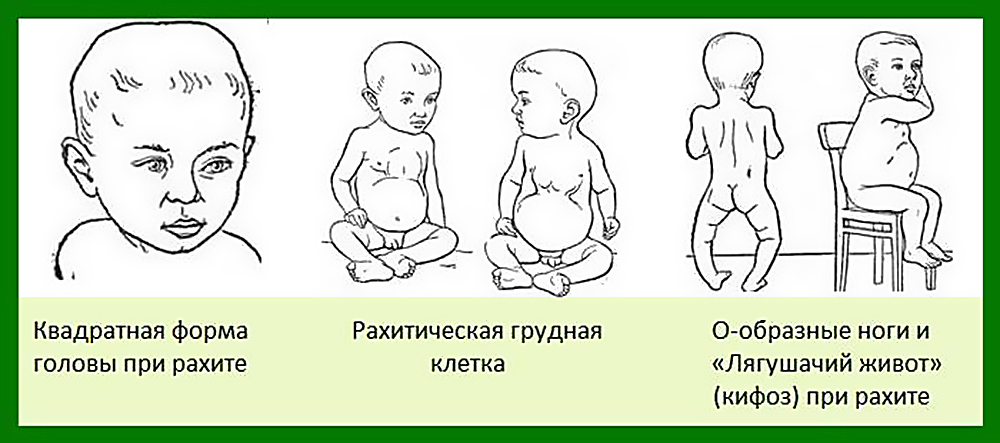Arthroscopy: indications, recovery from surgery
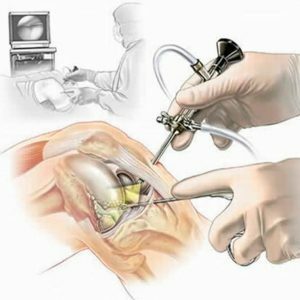
Arthroscopy is an endoscopic examination of the joints, which is performed with a diagnostic and therapeutic purpose.This procedure is classified as minimally invasive surgery.Surgical intervention is carried out without cuts. The main advantages of arthroscopy are the minimal risks of complications and short terms of the rehabilitation period in comparison with classical arthrotomy( open surgery).
Contents:The first mention of arthroscopy dates back to the beginning of the twentieth century, when the Danish surgeon S. Nordentoft reported the reality of such an operation.In the 20-ies.The same century, O. Birkher began to conduct endoscopic studies of the meniscus, his work was continued by a specialist from Japan Watanabe.It was he who, as part of a group of surgeons, was able to develop an arthroscope, which differs little from the modern .To date, arthroscopy has become widespread, as it can help evaluate the condition of various bones, perform operations to replace and remove damaged tissues, and perform joint restoration.
The most famous types of arthroscopy - diagnosis and treatment
Arthroscopy is performed on large joints: knee, shoulder, hip, elbow and ankle.Let us consider the particular types of this procedure.
Arthroscopic meniscus and knee joints
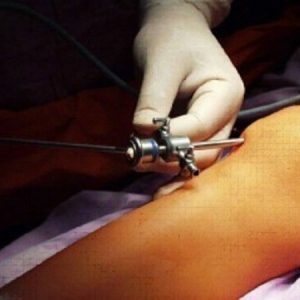 The most common.In cases of injuries, anterior and posterior cruciate ligament, tearing of the meniscus, using the procedure of arthroscopy resort to autogenous transplantation, i.e.Material for plastics is the patient's own ligamentous device( femoral ligament) or resort to artificial materials.
The most common.In cases of injuries, anterior and posterior cruciate ligament, tearing of the meniscus, using the procedure of arthroscopy resort to autogenous transplantation, i.e.Material for plastics is the patient's own ligamentous device( femoral ligament) or resort to artificial materials.
Arthroscopy of the shoulder joint
This technique also applies to frequently occurring, and besides the diagnostic component, it also performs a therapeutic function.In most cases, the rupture of the rotator cuff is characteristic for athletes, and for people who do not belong to the category of sports, such injuries as usual dislocation of the shoulder joint and its instability are more common.
Arthroscopy of the hip
This type of medical intervention is more rare, and its implementation requires a doctor of high professionalism.This method is used to assess the morphological picture of the hip and joint apparatus itself, as well as adequate treatment.
Arthroscopy of the elbow joint
The procedure can be performed in two cases: with diagnosis - the indication for it will be complaints of pain, violations of flexion and extensor function in the joint, and the need for treatment - for operative joint interventionsInfections and arthritis.
Arthroscopy of the Ankle
There is a lot of indications for diagnosis and medical intervention in the pathology of the ankle joint.The technique is characterized by quickness and painlessness.The rehabilitation period after surgery with arthroscopy of the ankle joint lasts about 5 weeks, the regime is gentle, after which the patient can walk normally, completely stepping on the foot.
Indications for arthroscopy
The uniqueness of arthroscopy allows using it as a diagnostic and therapeutic procedure. For diagnostic purposes, it is used in cases where other studies( computer and magnetic resonance imaging, ultrasound, radiography) are not very informative.Arthroscopy is performed with mechanical injuries( ligament tears, tendons, meniscus, fractures), and diseases of various etiologies( arthritis, synovitis, arthrosis).
Some of these violations require prompt intervention. Surgical arthroscopy is used in the following cases:
-
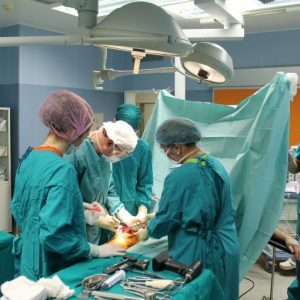 meniscus cysts;
meniscus cysts; - inflammation of bone tissue of a chronic nature;
- extraction of bone fragments and cartilage from the joint cavity at fractures;
- treatment of inflammatory joint diseases;
- sprains;
- spikes and outgrowths in the joint bag.
Contraindications
Regardless of the location of the proposed intervention, the following types of contraindications to arthroscopy are distinguished:
- articulation of the joint gap with bone or connective tissue( ankylosis);
- Purulent inflammatory processes and wounds that contain pus;
- severe general condition of the patient;
- volumetric damage with a breach of joint tightness.
Please note : after assessing the patient's condition, even if there are relative contraindications, the doctor can make a positive decision about the procedure!
How to prepare for the
examination Regardless of the joint in which the arthroscopy will be performed, the preparation proceeds in the same way.During the conversation between the surgeon and the anesthesiologist with the patient, the patient learns about the procedure for the procedure, he is told about the possible risks and complications. Mandatory written consent of the patient to use anesthesia and the operation.
The attending physician will most likely prescribe an electrocardiogram, conduct laboratory tests of blood and urine, and some other studies are possible. It is forbidden to eat and drink 12 hours before arthroscopy, it is recommended to cleanse the intestines and take a sleeping pill in the evening before the test.
Important: when carrying out arthroscopy of the knee or ankle, it is desirable to pre-purchase crutches and learn how to apply them.It would be superfluous to bring them to the hospital - they will come in handy right after the procedure.
Progress of operation
Usually all types of arthroscopy are performed under anesthesia - this ensures a sufficient effect of anesthesia throughout the operation and reduces the risk of pain in the postoperative period.
The procedure lasts from 1 to 3 hours, it is performed according to the following algorithm:
-
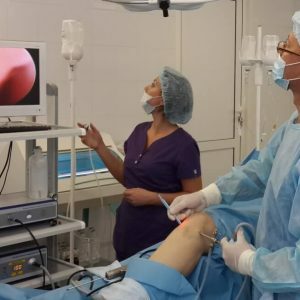 gives the patient a comfortable position on the operating table;
gives the patient a comfortable position on the operating table; - provides access to the damaged area;
- is applied a tourniquet( if necessary);
- puncture and introduction of an arthroscope;
- with the help of other tools, through additional punctures, the joint cavity is rinsed.
Probable complications after operation
The procedure of arthroscopy itself is practically not associated with risks. Complications after surgery occur in the range of 2% of the operations performed, and completely depend on the clinic, the doctor's qualifications and the general health of the patient.
Please note: for the prevention of post-arthroscopic infections, doctors prescribe antibiotics!
Possible adverse effects:
- inflammation( synovitis);
- mechanical damage to the joint due to faulty instruments;
- blood accumulation in the joint bag;
- spikes;
- case syndrome( muscle, tissue or nerve compression);
- damage to nerve fibers;
- damage to the motor function of the joint.
Restoration after arthroscopy
The rehabilitation period after surgery in the joint depends entirely on the type of manipulation, age and health of the patient and lasts from several hours to a month.
To speed up this process, you should follow simple rules.
The patient needs:
- the introduction of antibiotics immediately after surgery;
- complete rest and fixation of the limb;
- a sharp reduction in motor activity;
- abstaining from hot baths, hypothermia and prolonged sun exposure for 14 days.
Arthroscopic method of joint treatment in most cases replaces an open operation.The most important advantages of this method are minimal incisions, the operation practically leaves no traces on the body, the patient tolerates this operation easily.Time for rehabilitation after arthroscopy is several times less than in rehabilitation with severe arthrotomy.
Natalia Tavaluk, medical reviewer

